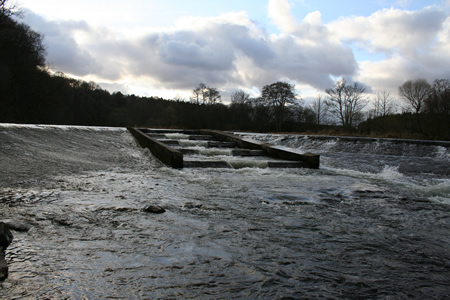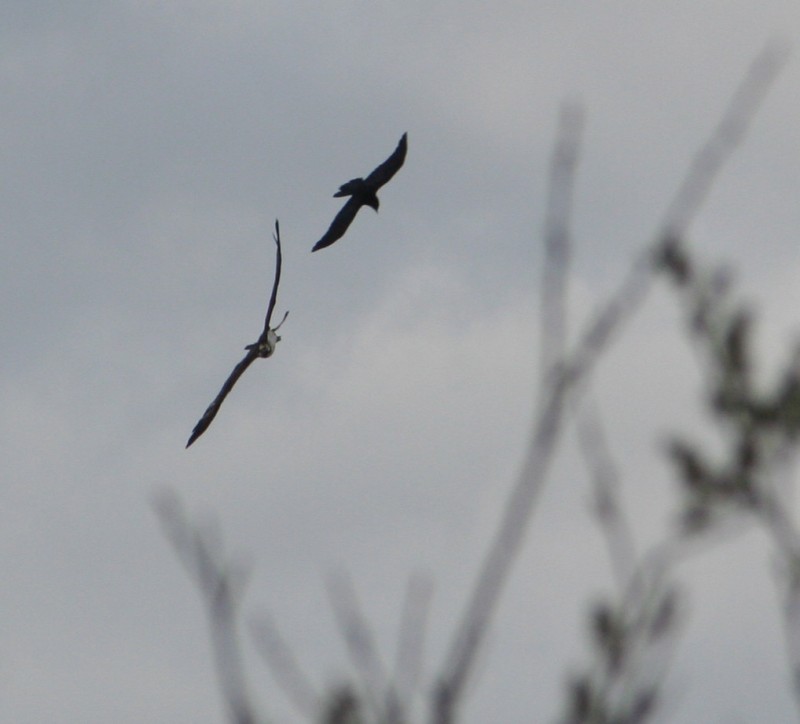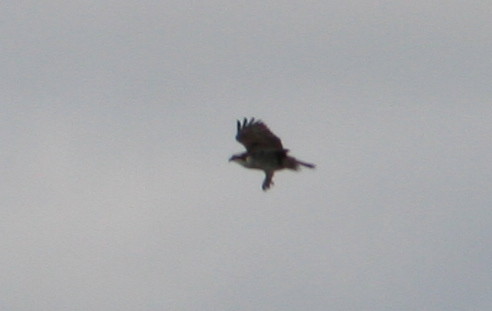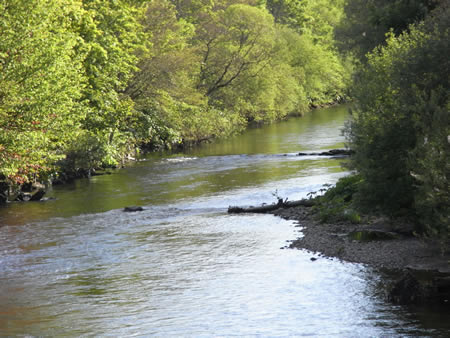These bulletin blogs represent news about Finavon and the South Esk, and my views as a riparian owner. While I may digress at times to write about other places, these are not the views of any other organisation, nor are they designed to promote the interests of any individual or organisation other than Finavon Castle Water and factors affecting the fishery. Tony Andrews
“Spring salmon” is a misnomer because the term tends to cover salmon coming into fresh water from the beginning of the season, often in the coldest part of the winter, to the end of May. In Scotland we hardly dare to use the word “spring” before early April, and the season of spring can continue into June, as it probably will this year.

Kinnaird Dam at a good height in late April 2013. The water remained very cold into late April which discouraged spring salmon from crossing the dyke to head on upstream. Downstream of the dyke 76 salmon were recorded caught and returned, 54 by rods and 22 tagged by the Marine Scotland net fished in the Arn Pool of Upper Kinnaird Beat.
For the purposes of identifying early running salmon I use the term “spring salmon” to include all multi sea-winter salmon that run into the river up to the 31st of May each year. It is very rare to see a grilse in the South Esk during that period, although I acknowledge that occasionally a very early grilse may appear in the river.
I use a rule-of-thumb reckoner to assess the river’s rod catches based on catches from four major South Esk beats, Kinnaird, Finavon, Inshewan and Cortachy & Downie Park. Catches of salmon from those four beats probably represent two thirds of the total catch of the river.
The declared 2013 catches of spring salmon in the period 16/2 to 31/5 for those beats are:
Kinnaird (all beats) 54
Kinnaird MS net 22
Finavon 20
Inshewan 23
Cortachy & DP 24
TOTAL CATCH 143
If we take my assumption that 143 MSW salmon is about two thirds of the total catch of spring salmon from the South Esk we can calculate that about 215 salmon have been caught on the river so far this year (most of which would have been female and returned alive to the river).
Another assumption, based on a relatively low fishing effort and on years of observation, is that a maximum of 15% of the fish in the river have been caught by anglers. On that basis we might assume that the total number of spring salmon entering the South Esk between 16 February and 31 May was 1,419. And that isn’t a significant difference from my estimate of 2011 that the average South Esk spring run is about 1,500 MSW salmon.
Of course there are complicating factors such as the killing of spring salmon by Usan Fisheries from 1 May, but we also know that a high proportion of those dead fish ‘belong’ to rivers such as the Don, Dee, North Esk and Tay. The South Esk’s share of those coastal net caught spring salmon, doubtless gracing the fish slabs of Europe, is about 40% of the total netted and killed. Of course dead salmon don’t spawn, while the rod caught and returned fish should do so.
One final statistic which may be of interest to my readers is the performance of the middle beats of CC&DP, Inshewan and Finavon against their average five-year spring catches. Those three beats average 52 salmon betweeen them in the period up to 31/5 over the last five years. In 2013 the three beats recorded 67 MSW salmon. I attribute that higher catch to excellent fishing conditions in a year when the number of spring salmon was almost certainly lower than 2011 and 2012, although cold water did reduce the catch in the early part of the season – and benefitted the Kinnaird beats of course.
TA on 1st June 2013





